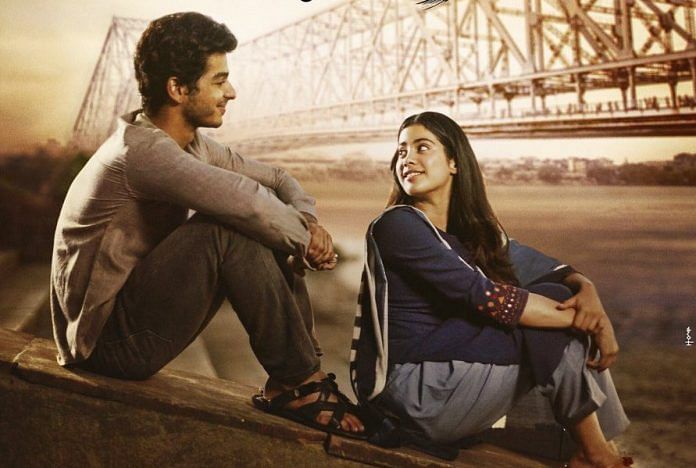As Dhadak hits cinemas, it is important to recount all the things that made its inspiration, Sairat, an exceptional tragic love story.
The Romeo-Juliet love story has been revisited a zillion times ever since Shakespeare’s play was first staged. Now imagine a Shakespearean tragedy with caste as a character.
That is the story of Marathi movie Sairat, on which Dhadak is based. Told with searing realism in a country torn by casteism, Sairat brings alive the story of Archi and Parshya.
Here are five things you need to know as you watch Dhadak in theatres:
Caste and economic divide:
Archi and Parshya’s tragic-epic love is born in a particular context – it is the forbidden love between a low-caste fisherman’s son and an upper-caste politician’s daughter. They face backlash from both the communities. Not only the lovers, but Parshya’s family too will have to leave the village because of his ‘transgression’. The father will beg his community to not punish him and his family for his son’s sins. Archi’s family will try time and again to kill them.
The hints are subtle, but they are there nonetheless. The sly references that someone is a ‘Patil’ and the impunity enjoyed by a Brahmin politician are in stark contrast to the repeated slurs thrown at the lower-castes. The economic divide becomes evident from the first scene itself, the cricket match that marks the beginning of the tragedy that awaits Parshya and Archi.
Unconventional, assertive female lead:
She’s dark-skinned. She is not your petite Bollywood beauty. She loves riding bikes and drives tractors. She goes to the farm, alone. Most of all, it is she who takes the lead. She will save Parshya from being beaten up by her brother. Archi is the one who makes the phone calls to Parshya. She tells him that they should run away because her parents are trying to marry her off.
She isn’t the damsel you need to rescue.
She will tear up the fake statement her father will make her sign to charge Parshya and his family with rape and kidnapping. And when Parshya crosses his boundaries and hits her, she leaves him too. That she comes back is a different thing, but she is confident enough to leave.
A dark, forbidden love:
Sairat is nothing like a typical Bollywood romance. It is a film that speaks to you in tones of satire, and discrimination. When Archi and Parshya run, their priority is survival, not marriage unlike what you’d see in a Bollywood film. They do get married and even have a child as time progresses. Then the brother comes to visit. This is the time you should stop reading this if you are looking for a happy ending. Because there is hardly ever a happy ending when it comes to inter-caste love in this country.
Realist narrative:
When the lovers are on the run, as a viewer you feel their trepidation. You see men carrying swords and chasing them into the fields and wonder if they will be caught.
You travel with them, through good times and bad. You feel Parshya’s anxiety when Archi leaves him temporarily. You feel Archi’s confusion when she holds that clove of garlic – she never learnt how to peel one, after all. For two minutes, you rejoice with Archi as she unwraps the gifts from her family.
The ending:
Sometimes, silence speaks louder than words. For Sairat, that is the most appropriate description. As Archi and Parshya’s young child who can barely walk, let alone understand life, stumbles into their house, the movie goes quiet. On the floor are the lovers, united in death as they could never be in life. The feeling of dread overwhelms you – you can see the child cry but you can only hear the unnerving silence that accompanies death.
Read in Hindi: धड़क मूवी देखने से पहले आपको सैराट फिल्म की कहानी से रूबरू होने की ज़रूरत है



